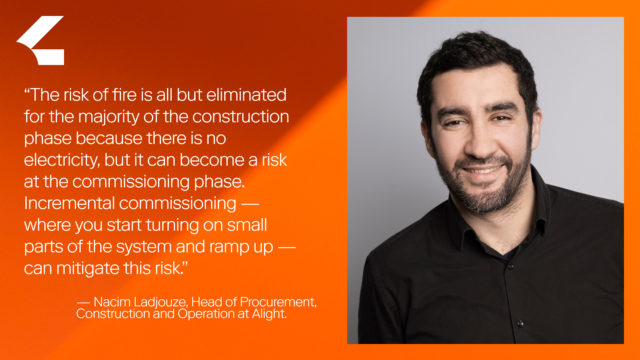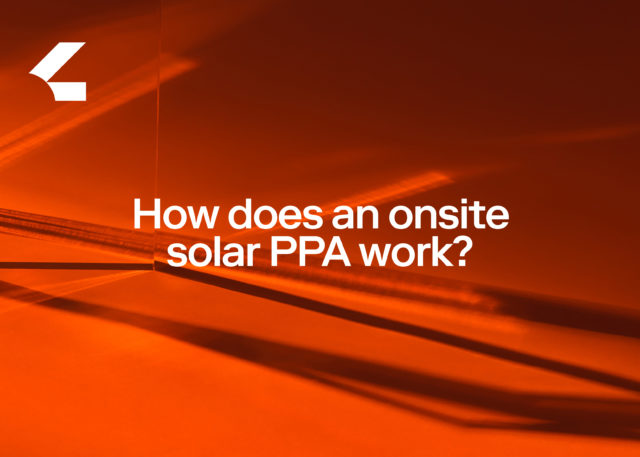The best way to mitigate these risks is to work with experienced and certified solar contractors. In this article, we will break down the operational risks that you should be asking your contractors about, plus best practices when it comes to mitigation measures, in order to ensure a safe and efficient installation. Download our handy risk checklist to be sure you’re covering it all.
1. Health and safety (HSE) risks
Installing a rooftop solar system often means working on top of tall buildings and using heavy equipment for loading materials. Naturally, this presents a risk for the individuals working on and around the roof, whether due to falling themselves, or panels and other heavy equipment being blown off the roof by strong wind.
When referring to health and safety, we often consider both individual safety measures (such as a helmet or harness) and collective safety measures (such as rooftop railings or fencing). While both are important, the latter is always essential because even if an individual acts irresponsibly by neglecting a safety measure, the collective measures put in place should prevent an incident.
To mitigate the HSE risks, be sure the solar contractor you’re working with provides extensive training for their workers on safety measures and safe installation practices. Also ensure that they use all necessary safety equipment, such as harnesses and helmets. A professional solar contractor will have proper planning of lifting, including loading zones and warning signs, and also fence off equipment so that it’s stable enough to withstand heavy winds. You can ask your solar contractor directly how many incidents or near misses they have had in a set time period or check their sustainability report, which often reports on these measures.
Lastly, make sure your contractor plans ahead to ensure that in the event that an accident or injury does occur, they have established clear protocols for emergency response.
2. Roof damage risks
When not planned for sufficiently, installing solar panels on a roof can potentially cause damage to the roof, such as leaks, broken skylights or weakened structural integrity.
To mitigate this risk, businesses should work with contractors who are experienced in rooftop solar installation and who take proper precautions to prevent damage to the roof. This should always include carrying out a structural assessment as a first step in site feasibility. The assessment can typically be done based on construction drawings, however, when these do not exist or are not up to date, a site visit is required to measure out the dimensions of load-bearing beams. An additional inspection before installation begins should also be carried out, to identify any existing damage.
A contractor should compile a roof protection plan prior to installation that contains various roof protection actions, such as building roof protection at landing zones and lining runways and landing zones with rubber mats or foam boards. They should also take measures to protect skylights and keep roof drains accessible.
In cases where damage is done or discovered during construction, a best practice is to document it in a roof damage and repair tracker that logs the location, date and description of the damage. The damage should be temporarily repaired and noted in the tracker. It should be permanently fixed as soon as possible to prevent further damage, and it’s helpful to include photos of the final outcomes. You can ask your contractor to share the damage and repair tracker, as it can be valuable to many stakeholders.
3. Fire risks
As with any electrical system, a rooftop solar system that is installed correctly should not introduce any significant risk to your building or employees. However, when not installed correctly, solar panels on a roof can pose two discrete fire risks: a risk that the installation itself catches fire (especially if the wiring is poorly installed or if there is a fault in the system) and a risk that if a fire breaks out, the installation will obstruct firefighters from reaching the fire.
To mitigate the risk of a fire, you should always work with experienced and certified solar contractors who are trained in proper installation practices, use high-quality equipment and have adequate guidelines for material handling. These professionals will know how to install the electrical components of the system in compliance with local building codes and regulations, taking extra caution during cable tightening as loose connections introduce risk. Finally, take care to contact local authorities (such as the fire department or police station) and inform them that there are solar panels on the roof.



